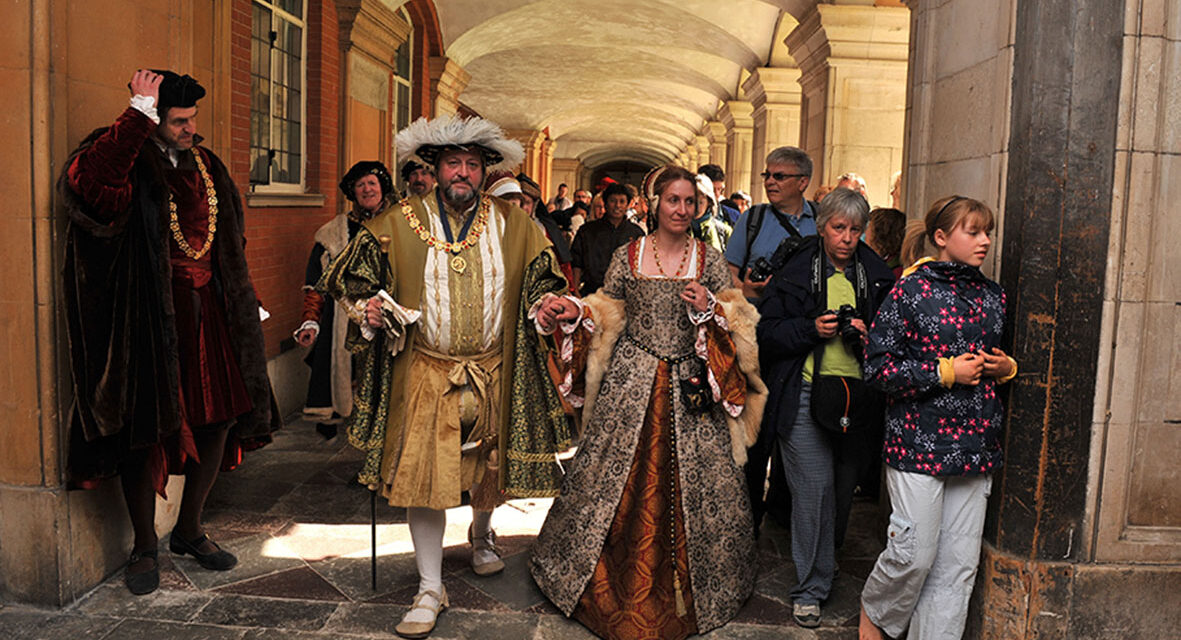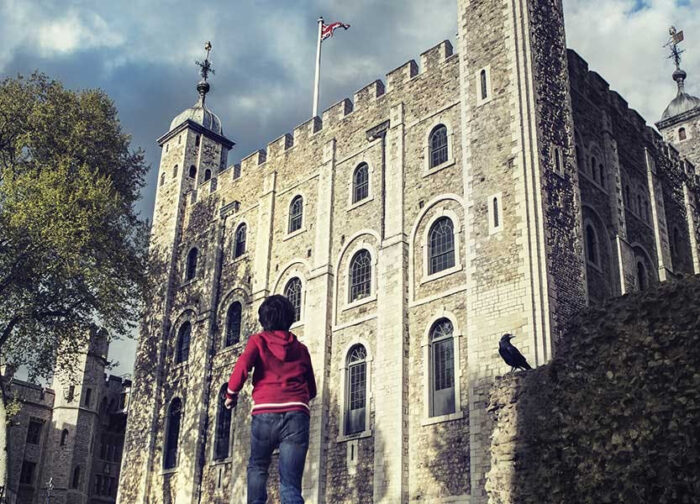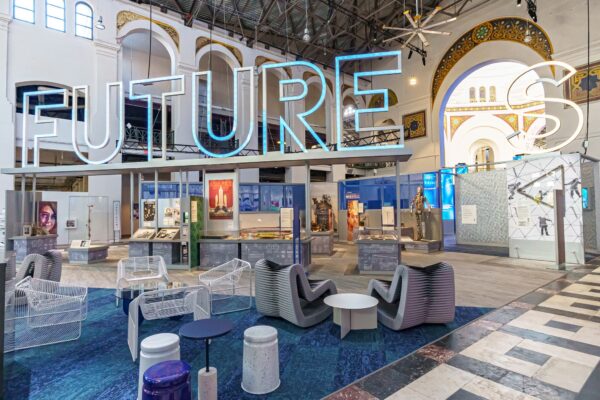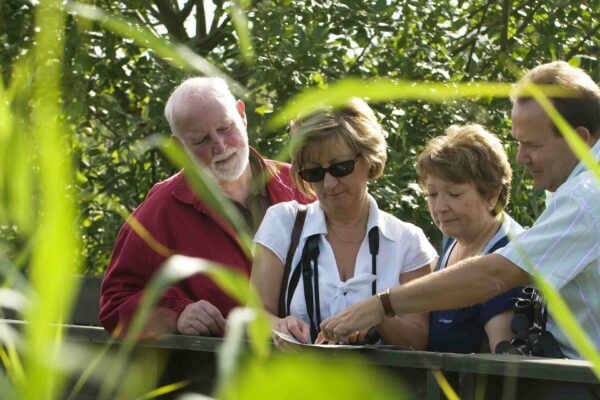- What We Do
- Understanding your audience
- Engaging new audiences
- Designing experiences
- Building loyalty
 Case studies
Case studiesHistoric Royal Palaces: Authenticity and the audience
By combining bespoke in situ and conceptual research with Culture Segments insight, Historic Royal Palaces have opened the door to an illuminated and informative understanding of how their priority and potential audiences engage with the notion of authenticity.
Discovering visitors’ emotional and intellectual perceptions of authenticity has deepened the relationship between Historic Royal Palaces and their audiences, revealed the strategic importance of authenticity, and will impact upon organisational and audience development for both current audiences and future generations.

In August 2014, HRP looked to Morris Hargreaves McIntyre to help them understand a crucial, if conceptual notion at the heart their organisation: the role of authenticity.
HRP wanted to know what visitors understand by the term “authenticity”, how it influenced the visitor experience, audience engagement and the audience’s affinity with their organisation.
Strategic insight into authenticity, particularly in relation to exhibition design and audience engagement, would allow HRP to better serve their current visitors, reach out to potential audiences, and shape their projects and interpretive practices in the future. HRP’s research objectives were to:
- Explore how visitors’ perceptions of authenticity are formed;
- Understand how these perceptions impact on levels of engagement and enjoyment during their visit;
- Provide valuable insights to shape future interpretation projects.
This meant delving into historical context, semiotics and societal interpretation, as well as audience perception.
The research was undertaken in two phases. The first, more qualitative phase allowed us to test completely unprompted responses to authenticity. We then developed the common themes drawn out through these responses and were able to test them further through the second, more quantitative phase.
Strategic insight into authenticity, and more importantly, into authenticity and audience engagement, would allow HRP to better serve their current visitors, reach out to potential audiences, and shape their projects and practices in the future. It was an ambitious idea, with the potential to extend beyond one case study and stimulate action across the institution.
A fresh approach for an age-old concept
Such a project required an innovative approach and a bespoke research methodology: we wanted to go over incredibly big questions with an incredibly fine toothcomb. At MHM we pride ourselves on measuring the un-measurable, from attitudinal audience behaviour, to the impact of abstract theory on cultural venues. For this project, we needed to do both.
Using one of HRP’s most well-known venues – Hampton Court Palace – as a case study, we set about exploring the nuanced notion of authenticity in an historic venue.
HRP Culture Segments has already provided the organisation with a common language around audiences and is informing marketing, digital, interpretation and education strategies that are putting audiences first. For this project, HRP wanted to focus on priority segments in both visitors and non-visitors, and we used our existing knowledge of their audiences to create a bespoke methodology.
HRP’s segments have idiosyncratic motivations, values and needs that impact upon their cultural choices and affinities, and we designed our research around these traits in order to encompass their different attitudes and learning styles.
We first conducted a literature review around the classic and contemporary implications of authenticity, in order to supplement our own primary research.
Taking our literature review into account, MHM worked closely with HRP to formulate an interactive, engaging approach focusing on qualitative research: a multifaceted concept necessitated a multifaceted plan.
Whilst traditional qualitative research methods normally take an ‘inside-out’ method, focusing on perceptions that we assume exist in other people’s heads, we decided to incorporate an element of ‘outside-in’ research, acknowledging that attitudes to authenticity may have been influenced by surrounding culture.
We invited a sample of 48 visitors and non-visitors to Hampton Court Palace in order to conduct intensive in situ and conceptual research. MHM pioneered the audience forum approach – by bringing together a large sample of participants we were able to work closely with a wide range of people, retaining the depth of a focus group but expanding our sample size and encouraging participants to propose their own ideas and concerns.
Results: the once and future palace
Analysis of the literature review and the audience forum was extremely revealing, emphasising not only the complexity of authenticity as a concept, but also highlighting just how important it is to audience engagement, and particularly audience investment, in an organisation.
Opinions on authenticity are divided, but frequently impassioned, with several key themes emerging. It’s clear that the concept of authenticity in all its guises – be it tangible objects or intangible qualities – contributes to all aspects of Hampton Court Palace, and by extension the rest of the Historic Royal Palaces organisation. Participants commented on storytelling, costumed interpretation, restoration, conservation and display. The major discovery from the research was that, for the majority of visitors, authenticity is a subjective feeling rather than an objective judgement – there were many distinctly emotional responses to the way Hampton Court Palace can transport them, make them feel and make them imagine. Authenticity is experienced.
In addition to the more emotional responses, participants highlighted their understanding of, and the need for, excellent conservation and protection of historic objects and building fabric.
Visitors were passionate about seeing objects in their original context and, while acknowledging that this had negative implications for our ability to preserve them for future generations, overwhelmingly felt that this was a sacrifice worth making – HRP should do its utmost to conserve objects in situ but not if this means removing them from their original home. They were open to different methods of presentation – sometimes a complete re-creation is the right way to present a space and tell a particular story, in other instances leaving a room untouched might be the best choice. Most importantly, they said they trust HRP to do the research and make these informed choices.
Participants in the forum found the discussions on authenticity to be emotionally and intellectually stimulating, as the eclectic mix of research methods allowed them to really connect with the research topic, and the venue itself. This in turn provided a high standard of qualitative material that MHM and HRP turned into strategic insight, which fed well into the design of the quantitative element.
Combining the primary research with the well-established HRP segments will allow HRP to make considered decisions, representing a range of audiences with a range of desires. The impact of ‘authenticity’ extends beyond the individual, and beyond an individual generation; with MHM’s bespoke insight, HRP can now confidentially cater for different attitudes to authenticity in their future organisational and audience development plans.
The qualitative research gave HRP a very nuanced understanding of visitor attitudes to authenticity. It showed that visitors have quite a sophisticated grasp of some of the issues and HRP decided to explore some of the most important questions further with a large quantitative survey across three palaces, covering over 2000 visitors. The combination of the deep insights gained from the qualitative research and the statistically significant evidence from the follow up quantitative research, has created a very robust and convincing set of conclusions which is becoming embedded in the way HRP thinks about presenting historic spaces and designing within them.
The results of this groundbreaking research have impacted in powerful, tangible ways right across the organisation. The research has been presented widely within HRP and is embedded in their thinking and planning processes for all interpretation projects – for example, when thinking about exhibition design, HRP knows that ensuring authenticity of experience, rather than authenticity of object, is key for most of their visitors. The research is also informing thinking in other departments.
Authenticity is an important area of academic inquiry in the heritage world and HRP has presented the results of the qualitative research at a UNESCO ICOM conference and the HRP team are currently working on an academic article to be published next year. As an Independent Research Organisation, HRP takes its academic research responsibilities very seriously and being able to add new insight to this academic debate will be an important outcome of the visitor research.
As a result of the research, HRP also understands the differences in attitudes, behaviours and preferences of each segment and they can make informed, strategic decisions about what interpretive approaches will either resonate with, or alienate, a particular segment. The research highlighted some real challenges in meeting competing audience demands in a single space – how to satisfy the visitor who wants an immersive experience and doesn’t want any information about reconstruction to break the “magic” in the same room as a visitor who wants lots of information about the reconstruction process.
Authenticity is now a lens through which all visitor research projects are considered. More than that, the insight from the authenticity research, hasn’t just informed findings for subsequent research projects, it also informs research design. It helps understand and craft our research questions for new projects.
Discovering visitors’ emotional and intellectual perceptions of authenticity has deepened the relationship between HRP and their audiences, revealed the strategic importance of authenticity, and has made a huge impact upon interpretation, exhibition design, audience development strategy and research design right across the organisation.
Other related content to check out
 يتعلم أكثر
يتعلم أكثرCulture Segments
Culture Segments is a powerful psychographic segmentation tool to help you better understand and engage with your attenders and non-attenders.
 يتعلم أكثر
يتعلم أكثرDesigning experiences
Whether you’re testing a new exhibition, museum concept or visitor journey, our audience insight fuel your ability to make the right decisions at the right time.
 يتعلم أكثر
يتعلم أكثرMembership strategy
Get to the heart of what motivates members to join, donate and engage more deeply year after year.
- Engaging new audiences
- Understanding your audience
